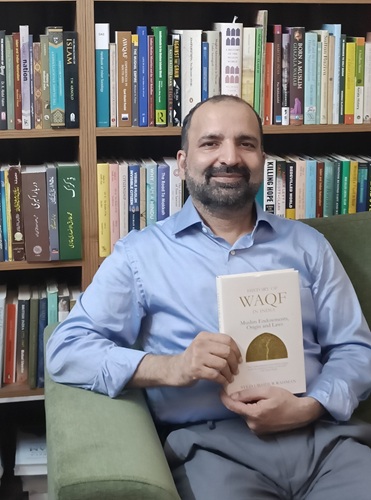
by Editor | Sep 20, 2025 | Business, Halal Food, Halal Industries, Halal Medicine
KUALA LUMPUR, 20 September 2025 – The World Halal Business Conference 2025 Kuala Lumpur (WHBC), held today at the Malaysia International Trade and Exhibition Centre (MITEC), once again reinforced Malaysia’s leadership in shaping the global Halal economy, under the theme “Halal: Beyond Boundaries.”
In the keynote address, YAB Dato’ Seri Dr. Ahmad Zahid Hamidi, Deputy Prime Minister of Malaysia and the Minister of Rural and Regional Development, read by YB Senator Tengku Datuk Seri Utama Zafrul Tengku Abdul Aziz, Minister of Investment, Trade and Industry (MITI), he emphasized the transformative potential of the Halal economy, urging stakeholders to look beyond geographical, industrial, and mindset boundaries to unlock new frontiers of growth.
“The Halal industry should no longer be perceived as exclusive to Muslims. Instead, we must present it to the world as a universal symbol of quality, integrity, safety, and sustainability — values that resonate with all consumers, regardless of faith or background.”
The Halal economy has grown far beyond its traditional scope of food and compliance, evolving into a global force across pharmaceuticals, cosmetics, logistics, Islamic finance, travel, and digital innovation. He reaffirmed Malaysia’s strong performance in the sector, with Halal exports for the first half of 2025 reaching RM33.32 billion, representing 16.1% of total national exports.
Malaysia was also recognised as the leading global Halal economy for the 11th consecutive year in the State of the Global Islamic Economy Report 2024/2025, an achievement credited to its robust ecosystem, innovation-driven approach, and multi-stakeholder collaborations.
The WHBC 2025 Kuala Lumpur gathered more than 1000 participants from 42 countries, including policymakers, business leaders, scholars, and entrepreneurs. The conference also hosted a Halal Industry Townhall Session, alongside YB Senator Tengku Datuk Seri Utama Zafrul Tengku Abdul Aziz, Minister of Investment, Trade and Industry. Their leadership and perspectives provided invaluable insights into the current landscape as well as the future direction of the global Halal industry.
Looking ahead, the Deputy Prime Minister reiterated his appeal for the establishment of both an ASEAN Halal Council and a World Halal Development Council to strengthen cross-regional dialogue and governance.
The WHBC 2025 concluded with a shared commitment among stakeholders to translate insights into action, ensuring that the Halal industry continues to drive sustainable growth, inclusivity, and resilience on a global scale.

by Editor | Sep 20, 2025 | Business Summit, Events, Halal Food, Halal Industries, Halal Medicine
Kuala Lumpur, 20 September 2025 – OCBC Al-Amin Bank Berhad (OCBC Al-Amin) signed a strategic partnership with Halal Development Corporation Berhad (HDC) at the Malaysia International Halal Showcase (MIHAS) 2025, marking a significant step forward in strengthening support for halal entrepreneurs and expanding opportunities within Malaysia’s halal economy.
The Memorandum of Understanding (MoU) was formalised between OCBC Al-Amin Chief Executive Officer, Tuan Syed Abdull Aziz Syed Kechik, and HDC Chief Executive Officer, En. Hairol Ariffein Sahari.
Tuan Syed emphasised OCBC Al-Amin’s deep commitment to the halal sector. “At OCBC, our commitment goes beyond financing. We aim to support the growth of halal businesses by combining financial solutions with market connectivity, equipping halal entrepreneurs to grow their presence in Malaysia and aspire to venture into global markets. We are pleased to have this collaboration with Halal Development Corporation to provide greater opportunities to entrepreneurs and businesses in the halal sector,” he said.
CEO of HDC, Hairol Ariffein Sahari, described the partnership as a pivotal step in advancing Malaysia’s halal economy, which currently contributes about 8.1% to the nation’s GDP and is projected to reach a market value of USD 113 billion by the end of 2030.
He said, “Through this collaboration, we are laying a robust foundation to connect halal entrepreneurs with Shariah-compliant financial solutions, while simultaneously providing access to HDC’s comprehensive support services, including training, consultancy, and market facilitation via the Halal Integrated Platform (HIP). We will provide impactful programmes such as workshops, financial literacy programmes, and awareness campaigns designed to build the capacity of halal entrepreneurs. This partnership emphasizes HDC’s mission to position halal as the first choice in business ventures, empowering entrepreneurs and SMEs to enhance their competitiveness and expand Malaysia’s halal products globally.”
This initiative aligns closely with the Halal Industry Master Plan 2030, particularly in strengthening industry infrastructure and nurturing home-grown halal champions. Under the MoU, OCBC Al-Amin and HDC will collaborate extensively to promote and broaden the reach of Shariah-compliant financial products within the halal ecosystem, enabling effective cross-referrals, knowledge exchange, and expanded market access.
OCBC Al-Amin remains dedicated to supporting growth and sustainable development in Malaysia’s SME, including the halal industry. One of the initiatives is its Islamic Portfolio Guarantee-i (PG-i) agreement with Credit Guarantee Corporation Malaysia Berhad (CGC) to support the growth of Bumiputera and women-led enterprises. Prior to this, OCBC Al-Amin had already disbursed a total of RM268 million in PG-i schemes with CGC since 2017. Through these efforts, OCBC Al-Amin continues to play a role in driving meaningful and lasting progress in Malaysia’s halal industry.
Since its establishment in December 2008, OCBC Al-Amin has remained among the top foreign Islamic banks in Malaysia, consistently placing among the top two by assets since 2013. It offers its products and services through the 38 OCBC branches nationwide, including 7 that are standalone Islamic banking branches.

by Editor | Sep 20, 2025 | Business, Corporate, Corporate Buzz, Corporate finance, Corporate Governance
Maeeshat News Network | New Delhi/Riyadh
In a dynamic push to strengthen bilateral economic ties, India and Saudi Arabia are intensifying collaboration in the aviation and cargo sectors, fuelled by strategic investments, expanding airline operations, and booming tourism and trade. This partnership aligns with Saudi Arabia’s Vision 2030 diversification agenda and India’s ambitious aviation growth trajectory, cementing both nations as pivotal players in the global air transport ecosystem.
A Thriving Private Aviation Market
The private aviation sector between India and Saudi Arabia is witnessing robust growth, driven by rising demand from high-net-worth individuals (HNIs) and corporate travellers. India’s private jet fleet, currently comprising approximately 140 business jets, is projected to grow at a compound annual growth rate (CAGR) of 10-12% over the next decade, bolstered by infrastructure initiatives like the UDAN scheme and airport modernization programs. Saudi Arabia, with over 200 registered business jets, is capitalizing on Vision 2030 mega-projects, such as NEOM, to solidify its position as a regional aviation hub.
Bilateral Trade and Strategic Investments
Aviation trade between the two nations is flourishing, with India exporting aircraft and aerospace components worth USD 1.12 billion to Saudi Arabia in FY2024-25, while importing USD 839.05 million in similar goods. A landmark moment came during Prime Minister Narendra Modi’s visit to Saudi Arabia in April 2025, which spotlighted aviation through the India-Saudi Arabia Strategic Partnership Council. Discussions highlighted a potential USD 100 billion Saudi investment in Indian sectors, with aviation as a cornerstone. Opportunities include joint ventures in maintenance, repair, and overhaul (MRO) facilities—projected to grow from USD 1.7 billion in 2023 to USD 2.4 billion by 2028—and sustainable aviation fuel initiatives.
Expanding Airline Connectivity
Saudi carriers are aggressively expanding into India. Flyadeal, Saudi Arabia’s budget airline, plans to launch services to India within the next 12 months as part of a broader initiative to add 25 new routes in the coming 3-4 months. This expansion will enhance connectivity, especially as Saudi Arabia projects 1.8 million Indian tourists in 2025, positioning India as the fourth-largest source of airline capacity growth for the Kingdom.
Defence and Aerospace Synergies
Defence-related aviation ties are also deepening. Saudi Arabia’s participation in Aero India 2025, India’s premier aerospace exhibition, underscored growing collaboration. In 2024, India’s state-owned Munitions India Limited secured a USD 225 million export deal with Saudi Arabia for ammunition supplies, reflecting the expanding scope of aviation and defence partnerships. The sixth meeting of the Joint Committee on Defence Cooperation in September 2024 further reinforced these ties.
Cargo Sector: Powering Logistics and Trade
The air cargo sector is a key growth driver, with Saudi Arabia’s market projected to rise from USD 2.87 billion in 2024 to USD 5.03 billion by 2030. Saudia Cargo is expanding its presence in India, operating two freighter flights to Mumbai and negotiating additional traffic rights to increase passenger belly hold capacity to five flights while adding freighter services to Mumbai and potentially Delhi.
India’s evolving air cargo landscape, critical for exports and supply chains, complements these efforts. Indian Commerce Minister Piyush Goyal’s visit to Saudi Arabia in November 2024 spurred new trade and investment collaborations, including logistics and renewable energy, which indirectly bolster cargo operations. Riyadh Air’s partnership with SATS Saudi Arabia in August 2025 aims to enhance cargo handling across Saudi airports, strengthening Indo-Saudi freight routes. Swissport’s expansion to 13 Saudi airports in June 2025 further improves ground handling, streamlining cargo operations.
Economic Context and Future Outlook
Bilateral trade reached USD 43.3 billion in FY2023-24, with aviation and cargo as key pillars. The second meeting of the Strategic Partnership Council in April 2025 established a ministerial committee on defence cooperation, extending to aviation synergies. India’s 2.6 million-strong diaspora in Saudi Arabia further deepens cultural and economic bonds.
Looking ahead, experts foresee sustained momentum, with potential investments from Saudi Arabia’s Public Investment Fund (PIF) in Indian aviation firms and joint technology ventures. As both nations prioritize sustainable and efficient air transport, this partnership is poised to reshape regional logistics and travel, fostering economic growth and strategic alignment in the Indo-Arab corridor.

by Editor | Sep 17, 2025 | Books, English, Entrepreneurship
Maeeshat News Network | Mumbai
Syed Ubaidur Rahman’s History of Waqf in India: Muslim Endowments, Origin and Laws is a monumental contribution to the study of waqf, the Islamic institution of charitable endowments, in the Indian context. Published in a robust 382-page hardbound edition, priced at Rs 895 in India, this book is a comprehensive and meticulously researched exploration of waqf’s theological, historical, and legal evolution over fourteen centuries. Rahman, a distinguished historian and author, delivers a work that is both a scholarly triumph and an accessible resource, appealing to a diverse audience, including students, researchers, legal scholars, policymakers, and general readers interested in India’s socio-religious and legal history.
The book opens with a detailed examination of the theological foundations of waqf in Islamic law, providing a clear and engaging introduction to the principles that underpin Muslim charitable endowments. Rahman explains how waqf, rooted in the Quranic emphasis on charity and community welfare, emerged as a mechanism to dedicate property for religious, educational, or social purposes. This foundational section is particularly valuable for readers unfamiliar with Islamic jurisprudence, as it sets the stage for understanding waqf’s broader historical and legal significance. Rahman’s ability to distill complex theological concepts into accessible prose ensures that both novices and experts can appreciate the subject’s depth.
From its theological origins, the book transitions into a chronological exploration of waqf’s development in India, spanning from the early Islamic period to the modern era. Rahman traces the institution’s growth under various dynasties, including the Delhi Sultanate and Mughal Empire, where waqf properties played a central role in supporting mosques, madrasas, and public welfare initiatives. He also examines the challenges faced by waqf during colonial rule, when British legal frameworks disrupted traditional systems of endowment management. This historical narrative is enriched by Rahman’s attention to the socio-political contexts that shaped waqf’s evolution, offering readers a nuanced understanding of its adaptability and resilience.
A significant strength of the book lies in its interdisciplinary approach, which seamlessly integrates historical analysis with legal scholarship. As Prof. Faizan Mustafa, Vice-Chancellor of Chanakya National Law University, aptly notes, the book is a “useful addition to the Indian awqaf scholarship” due to its comprehensive coverage of over fourteen hundred years, from waqf’s theological roots to the recently enacted Waqf (Amendment) Act, 2025. This dual focus makes the book an essential resource for students of both history and law. Similarly, Prof. Nandini Chatterjee of Oxford University praises it as a “comprehensive study” that examines waqf from the perspectives of Islamic law, Indian history, and contemporary legal developments, underscoring its relevance to a global academic audience.
The book’s treatment of the Waqf (Amendment) Act, 2025, is particularly noteworthy, given the legislation’s significance in reshaping the governance of waqf properties in India. Rahman provides a balanced analysis of the Act, detailing its provisions, implications, and the debates surrounding its passage. This section is timely and relevant, as it addresses ongoing discussions about waqf management, transparency, and modernization. By connecting historical precedents with contemporary legal reforms, Rahman ensures that the book is not only a historical account but also a practical guide for understanding current policy challenges.
Rahman’s writing is a standout feature of the book. His prose is clear, engaging, and well-structured, making dense subject matter accessible without sacrificing academic rigor. The book is organized into logically sequenced chapters that guide readers through waqf’s multifaceted history, from its origins to its modern-day implications. Each chapter builds on the previous one, creating a cohesive narrative that is easy to follow yet rich in detail. Rahman’s ability to contextualize complex legal and historical developments ensures that the book appeals to a broad readership, from academic scholars to curious laypersons.
At Rs 895, the hardbound edition is reasonably priced for its depth and scope, making it an excellent investment for libraries, academic institutions, and individual readers. The production quality is commendable, with a sturdy binding and clear typography that enhance the reading experience. However, the book could benefit from a more detailed index or glossary to assist readers unfamiliar with waqf-related terminology, particularly those new to Islamic law or Indian legal history. Additionally, while Rahman’s historical and legal analyses are thorough, the inclusion of more case studies or real-world examples could further illustrate the practical impact of waqf in contemporary India, making the book even more relatable to readers outside academic circles.
One of the book’s most significant achievements is its ability to fill a critical gap in the scholarship on Muslim endowments in India. While waqf has been studied in various contexts, few works offer the comprehensive, interdisciplinary perspective that Rahman provides. His meticulous research, drawing on primary sources, legal texts, and historical records, ensures that the book is both authoritative and insightful. Furthermore, the inclusion of perspectives from both Indian and international scholars, as evidenced by the endorsements from Prof. Mustafa and Prof. Chatterjee, underscores the book’s global relevance.
In conclusion, History of Waqf in India: Muslim Endowments, Origin and Laws is a definitive work that stands as a testament to Syed Ubaidur Rahman’s expertise as a historian and author. It is a scholarly achievement that bridges the gap between history, law, and theology, offering valuable insights into one of India’s most enduring socio-religious institutions. Whether you are a student of history, a legal scholar, a policymaker, or simply someone curious about the role of waqf in shaping Indian society, this book is a must-read. Its comprehensive scope, engaging prose, and timely relevance make it a vital addition to the literature on Indian history and Islamic endowments, destined to inform and inspire readers for years to come.

by Editor | Sep 16, 2025 | Opinion, Opinions, Politics
Maeeshat News Network | Mumbai
This analysis juxtaposes two landmark diplomatic declarations shaping the Israeli-Palestinian conflict: the Balfour Declaration of November 2, 1917, and the New York Declaration on the Peaceful Settlement of the Question of Palestine and the Implementation of the Two-State Solution, adopted on July 30, 2025, and endorsed by the United Nations General Assembly on September 4, 2025. The Balfour Declaration, a product of British imperial strategy, endorsed a Jewish “national home” in Palestine, setting the stage for enduring conflict. The New York Declaration, born from a global push to end the Gaza war, champions a two-state solution, emphasizing Palestinian statehood and mutual security. This comparison illuminates a century-long evolution from colonial unilateralism to inclusive multilateralism, highlighting both progress and persistent challenges in resolving one of the world’s most intractable conflicts.
The Balfour Declaration (1917): A Colonial Pledge
Issued during the tumult of World War I, the Balfour Declaration was a calculated move by the British government to secure Jewish support for the Allied cause, particularly from influential communities in the United States and Russia. With Palestine recently wrested from Ottoman control in 1917, Britain aimed to cement its influence in the Middle East. The declaration, a brief letter from Foreign Secretary Arthur James Balfour to Zionist leader Lionel Walter Rothschild, stated:
His Majesty’s Government view with favour the establishment in Palestine of a national home for the Jewish people, and will use their best endeavours to facilitate the achievement of this object, it being clearly understood that nothing shall be done which may prejudice the civil and religious rights of existing non-Jewish communities in Palestine, or the rights and political status enjoyed by Jews in any other country.
This 67-word statement pledged support for a Jewish homeland while offering vague assurances to protect the Arab majority, then 90% of Palestine’s population. Incorporated into the 1920 League of Nations Mandate for Palestine, it fuelled Zionist immigration, laying the groundwork for Israel’s establishment in 1948. Critics argue it sidelined Palestinian self-determination, contributing to the Nakba—the 1948 displacement of over 700,000 Palestinians. The declaration’s legacy is a paradox: a catalyst for Jewish statehood and a spark for a century of conflict.
The New York Declaration (2025): A Multilateral Vision
Adopted at a UN conference in New York from July 28–30, 2025, the New York Declaration emerged amid escalating violence in Gaza and the West Bank, with over 40,000 civilian deaths reported since October 2023. Building on UN General Assembly Resolution 79/81 (December 2024), it responded to stalled U.S.-led talks and growing global recognition of Palestinian statehood (over 140 countries by 2025). Co-sponsored by 16 nations, including France, Spain, and Norway, alongside the EU and the League of Arab States, the declaration was overwhelmingly endorsed by the UNGA with 142 votes in September 2025.
Formalized in an annex on August 6, 2025, the declaration outlines a comprehensive framework for peace, with key provisions:
Immediate Ceasefire and Humanitarian Relief: Demands a permanent ceasefire, release of all hostages and Palestinian prisoners, full Israeli withdrawal from Gaza per UN Security Council Resolution 2735, and unhindered humanitarian aid under international humanitarian law (IHL), rejecting starvation as a weapon.
Palestinian Governance: Supports Gaza-West Bank unification under the Palestinian Authority (PA), with a transitional administrative committee to strengthen PA governance. Opposes occupation, siege, or displacement.
Security Framework: Calls for a UN-mandated stabilization mission to protect civilians, enforce the ceasefire, and support a unified Palestinian security apparatus. Hamas must cede control to the PA under a “one state, one government, one law, one gun” policy. Mutual security guarantees ensure safety for both Israel and Palestine, drawing on models like UNIFIL.
Statehood and Peace: Advocates a two-state solution based on 1967 borders, with East Jerusalem as Palestine’s capital, and comprehensive peace across the Occupied Palestinian Territory.
The declaration signals a global consensus on Palestinian self-determination, critiquing ongoing occupation and proposing enforcement mechanisms. Sceptics, particularly U.S. critics, dismiss it as symbolic, but its robust international backing and detailed roadmap offer hope for PA-led reconstruction and border security if implemented.
Comparative Analysis: From Imperial Fiat to Global Consensus
The Balfour and New York Declarations, issued in global hubs—London in 1917, New York in 2025—reflect their eras’ diplomatic paradigms while addressing Palestine’s future. Their similarities and divergences reveal the conflict’s complexity and the world’s evolving response:
Shared Intent, Divergent Contexts: Both declarations emerged during crises—World War I for Balfour, the Gaza war for New York—aiming to shape post-conflict realities. Balfour sought Allied advantage through Zionist support; New York seeks stability through multilateral cooperation, reflecting post-Cold War human rights norms.
Scope and Inclusivity: Balfour’s unilateral pledge favoured Jewish aspirations, marginalizing Palestinian voices. Its vague nod to “non-Jewish communities” lacked enforcement, sowing seeds of conflict. The New York Declaration, by contrast, explicitly champions Palestinian statehood alongside Israeli security, invoking IHL and UN resolutions to balance rights and obligations.
Impact and Legacy: Balfour catalysed Jewish immigration and Israel’s creation but ignored Palestinian self-determination, fuelling the Nakba and decades of strife. The New York Declaration, if enforced, could bridge divides by empowering the PA and ensuring mutual security, though its success depends on overcoming geopolitical resistance, notably from the U.S.
Mechanisms and Enforcement: Balfour relied on British mandate authority, lacking accountability for Arab rights. The New York Declaration proposes concrete mechanisms—a UN stabilization mission, PA-led governance, and international aid—offering a structured path to peace, though implementation remains uncertain.
A Pathway to Peace?
The Balfour Declaration, a relic of imperial ambition, reshaped Palestine with profound consequences, igniting a century of transformation and turmoil. The New York Declaration, rooted in multilateralism and human rights, seeks to rectify historical imbalances by prioritizing a viable two-state solution. Its detailed framework—ceasefire, governance reform, and security guarantees—offers a promising, if fragile, roadmap. As November 2025 approaches, with potential implementation milestones, the world watches to see if this declaration can transcend rhetoric and forge lasting peace. The shift from Balfour’s unilateralism to New York’s inclusivity marks progress, but the path to reconciliation demands unwavering global commitment.





